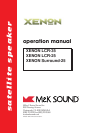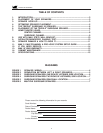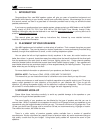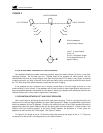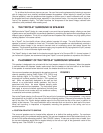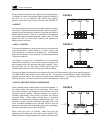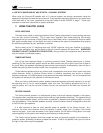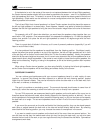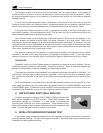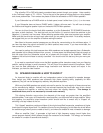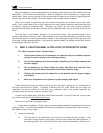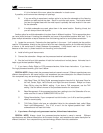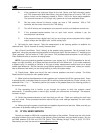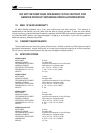
The speakers should be a minimum of a few feet away from the nearest listener. If the speaker is
located too close to a listener, its sound will become too directional and may distract that listener. Ideally,
the surround speakers should not call attention to themselves and should not be audible as separate
sources of sound.
If the surrounds must be located close to the listeners, aiming them at the room walls or even the
ceiling can help to reduce any directional effect. As described above, this can produce a desirable result
even in rooms where the surround speakers are an adequate distance from the listeners' heads.
If the surrounds cannot be placed on a wall, try placement on tables or the floor to the sides of the
main listening position, firing up towards the ceiling. This can work very well in environments that do not
allow permanent attachment of speakers to the walls.
Some listeners prefer to use multiple pairs of surround speakers. While this is not necessary, it can
provide a broader and deeper surround effect, with better coverage in very large rooms. When using
multiple pairs of surround speakers, a symmetrical installation pattern works best. For example, if you are
using two pairs of Surround 25 speakers for the surround channel, one pair could be mounted on the back
wall of the room, mounted equidistant from the back corners, with the other pair mounted on the side walls
of the room, equidistant from the same back corners.
The surround channels can be installed in a wide variety of locations, but because they are usually
mounted on the walls of the room, they can be a challenge to successfully install. If you have further
questions, please call us at the M&K factory, and we will be happy to discuss them with you in detail.
SUBWOOFER
Subwoofer location for Home Theatre systems is essentially the same as for music systems. See our
Subwoofer operation manual for more details. Remember to leave 2 - 3 feet of clearance between any
television and subwoofer, unless the subwoofer is magnetically shielded.
The preferred connection for the subwoofer is a subwoofer output from the amplifier or controller. This
insures that a full bass signal is being fed to the subwoofer. If you do not have such a subwoofer output
jack, connect the subwoofer to the front Left and Right channel amplifier outputs (do not use the Center
channel).
When the Subwoofer is connected to the Left and Right amplifier outputs, and the controller is in Pro-
Logic mode, the switch on the Pro-Logic control unit labeled Center channel WIDE/NORMAL must be set
to the NORMAL mode. If the switch is set to the WIDE mode, the bass content of the Center channel will
not be fed to the Subwoofer, and you will lose a significant amount of bass.
8. USE WITH M&K STBT5 WALL BRACKET
For wall mounting of the Xenon LCR45, LCR35, LCR25 and Surround 25,
M&K makes available the ST-BT5 bracket. These M&K brackets offer
tremendous flexibility for installation in a wide variety of environments,
including both horizontal and vertical adjustment. These brackets mount
easily to the speaker using the integral hardware found on the speakers’ back
baffle. They are available in either a black or a white finish.
9. SATELLITE/SUBWOOFER PHASING TEST
In any system using a subwoofer separate from Main speakers, a phasing test must be performed to
insure good bass blending. This test insures optimum sound in the critical bass frequencies where your
Subwoofer and Main speakers overlap.
SATELLITE SPEAKER
10



